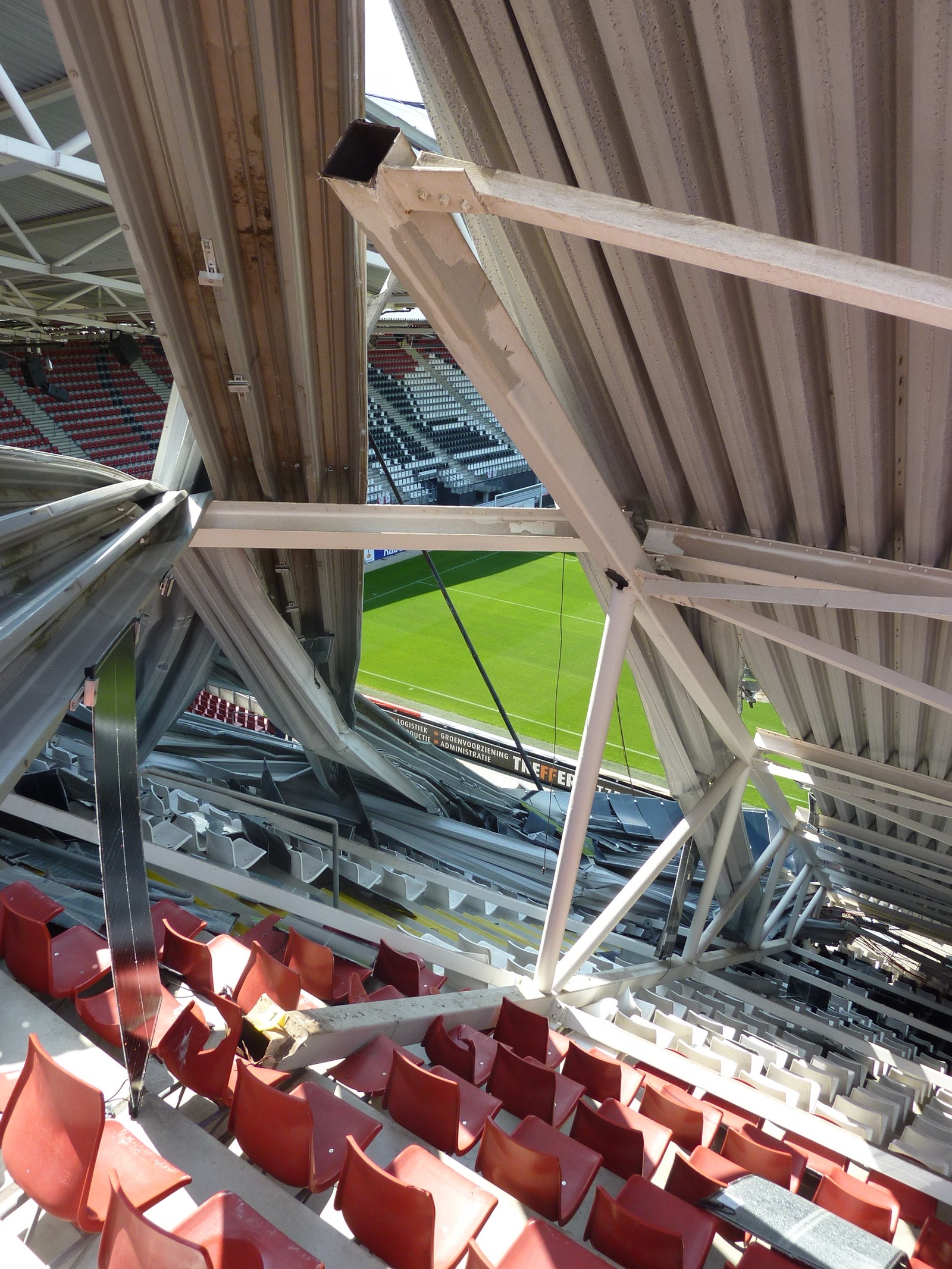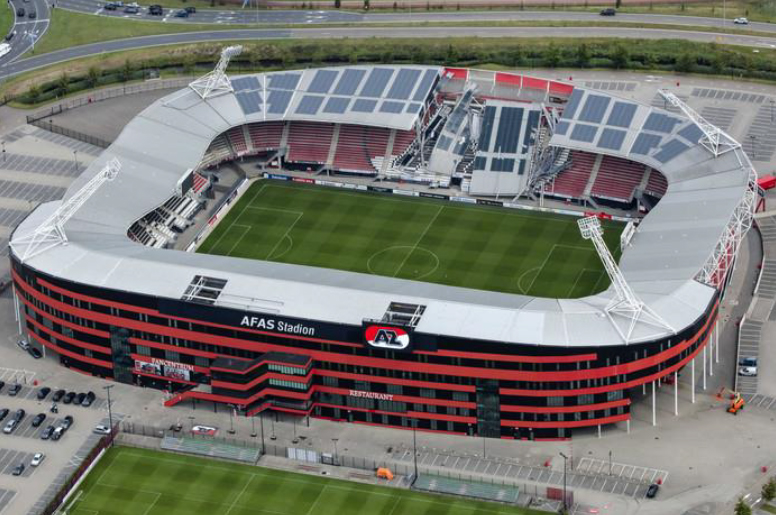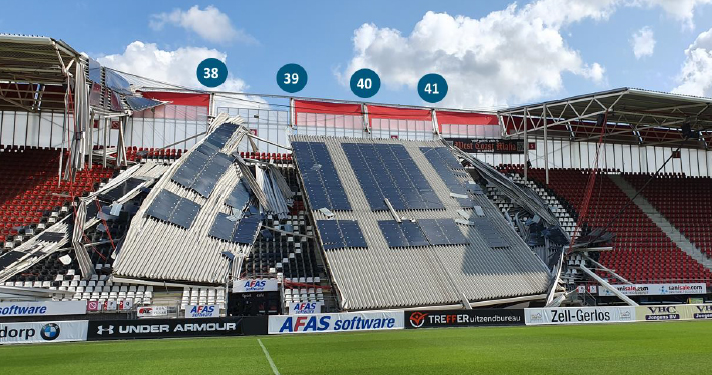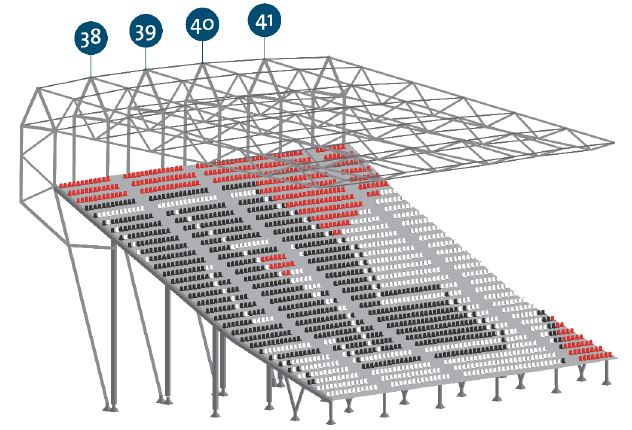The Netherlands: Final report on AZ Alkmaar roof collapse
source: StadiumDB.com; author: michał
 Royal HaskoningDHV have concluded their months-long investigation into the August 10 collapse of the roof at AFAS Stadion in Alkmaar. Their final conclusion: a mixture of poor welding, design errors and corrosion.
Royal HaskoningDHV have concluded their months-long investigation into the August 10 collapse of the roof at AFAS Stadion in Alkmaar. Their final conclusion: a mixture of poor welding, design errors and corrosion.
Advertisement
It lasted only 7 seconds, but evaluating the causes of last summer's roof collapse in Alkmaar took months. Experts from Royal HaskoningDHV analysed the smallest details, like frame-by-frame CCTV recordings or weather reports from the moment AFAS Stadion first opened in 2006.
Strong wind pulled the roof down
While not casting blame on anyone specifically, the the 71-page report indicates a number of issues with the stadium contributed to the collapse. Its direct cause was the strong west-southwesterly wind on August 10, causing downward pressure on the roof that it was not designed to withstand.
But the story may have begun over 12 years earlier, on January 18, 2007, just a few months after the stadium's inauguration. This is when the first strong wind storm of similar kind happened, which may have weakened the roof structure. Similar gusts were then recorded on that same date in 2018, both times with wind stronger than on August 10 of last year (hourly average of 23 m/s, compared to 17 m/s last summer).
This is a new finding compared to early analysis from the OVV (Dutch Safety Board) and interim report by Royal HaskonongDHV, although connected with causes indicated already days before the collapse.
Other causes already known
Just days after the incident took place, on August 16, OVV published its initial findings. These pointed to insufficient or faulty welding done at the top connection of roof girders and their supporting columns. The top joints gave way first, then the bottom ones cracked under pressure. While the welded connections failed, bolted ones remained intact.
Collapse under downward pressure also indicated design flaws of the roof structure. The final report upholds this as one of the causes, pointing also to cracks in the part of the roof that didn't give way on August 10 but remained afterwards.
 © Onderzoeksraad Voor Veiligheid
© Onderzoeksraad Voor Veiligheid
One more issue may have been the passage of time, which led to deterioration of the steel structure. Corrosion was found within the primary elements. As the report states, “the corrosion and the crack must have been uncovered during a visual inspection of this connection”. It's up to the OVV now to evaluate whether all protocols were kept from planning permission to the collapse itself.
The way forward for AZ Alkmaar
The football club published the entire report online in order to maintain full transparency and welcomed the results. In late autumn of 2019 nearly all of the roof over the stadium was dismantled and plans for its replacement are already progressing.
“Now we can take a new step. In consultation with all relevant parties, we now focus on the future and we will start working hard as soon as we have left the corona crisis behind us. Health is of course the most important priority at the moment, but we will keep you informed of the developments surrounding the new roof. Of course, the safety of our supporters and employees has the highest priority.” said AZ's general director Robert Eenhoorn.
Previously it was expected that construction of a new roof would be launched right after the current Eredivisie season. It would have been combined with adding further rows of seating in some sections to increase capacity and create a more uniform seating bowl. It's unclear how the pandemic will impact these plans.
With expansion in mind, AZ has also been looking at increasing parking capacity around the stadium, as required by the city of Alkmaar. There are plans to expand to the P9 section (currently green area used temporarily as parking, south of the stadium) and to redevelop part of the Sportcomplex ‘t Lood, east of the stadium, with parking in mind. Talks with the city on that issue took place in February.
What happened on August 10?
Last summer, while the stadium was not in use, strong winds prompted the collapse of the north-eastern stand's roof. One girder's top welding gave way (girder 40), pulling three further parts of the roof down as well. Although no injuries were reported, the stadium remained unused until December, when it was finally deemed safe, following dismantling of other parts of the roof.
Marc, StadiumDB Contributor
Advertisement
 StadiumDB
StadiumDB ©
©  ©
©  ©
©